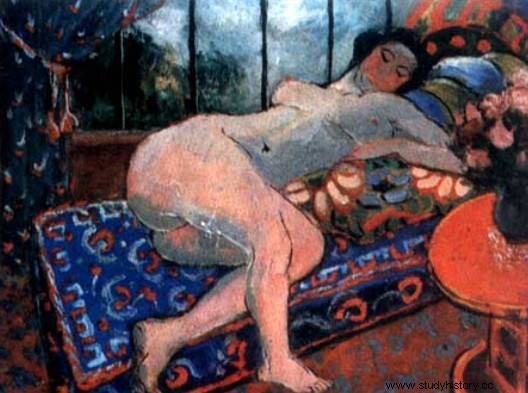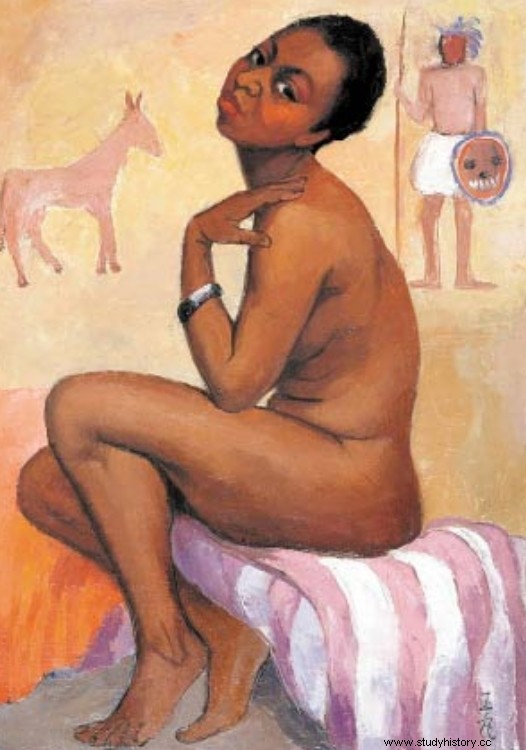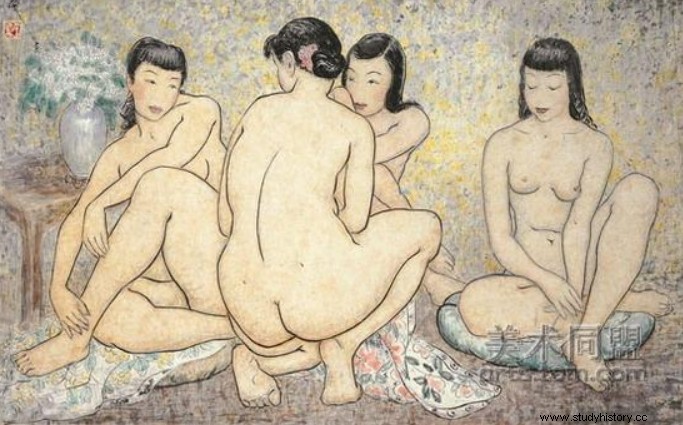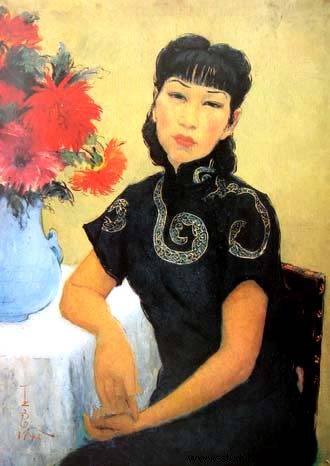Pān Yùliáng (潘玉良, 1895 – 1977) was a Chinese artist who explored painting, sculpture and printmaking. His avant-garde art has created controversy in China.
Sold at 13
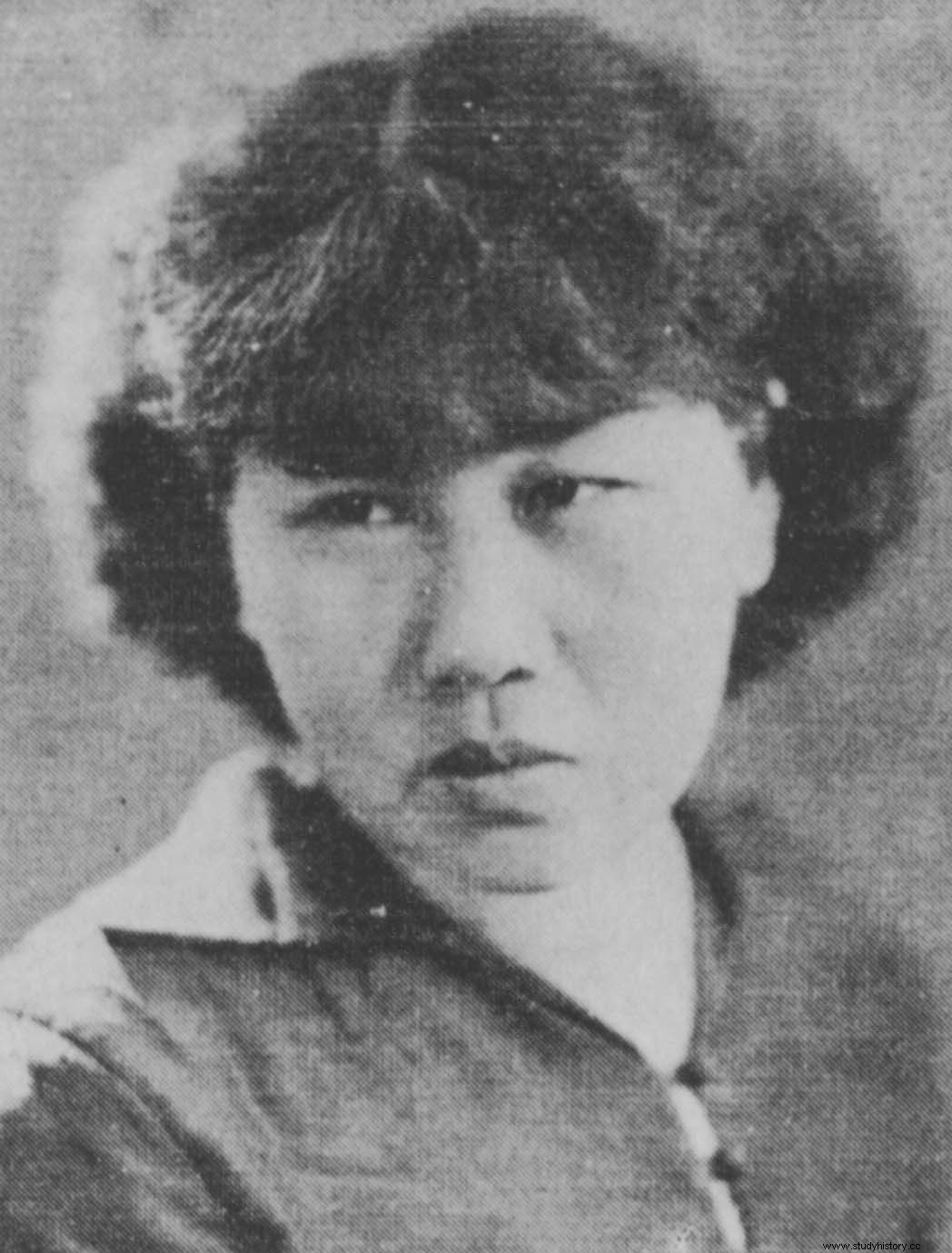 Pān Yùliáng was born on June 14, 1895 in Yangzhou (on the east coast of China), under the name of Chen Xiuqing . Both of her parents died during her childhood, her father when she was one year old and her mother when she was eight. Taken in by a maternal uncle, she takes the name of Zhang Yùliáng. She was only thirteen when her uncle sold her to a brothel in nearby Wúhú.
Pān Yùliáng was born on June 14, 1895 in Yangzhou (on the east coast of China), under the name of Chen Xiuqing . Both of her parents died during her childhood, her father when she was one year old and her mother when she was eight. Taken in by a maternal uncle, she takes the name of Zhang Yùliáng. She was only thirteen when her uncle sold her to a brothel in nearby Wúhú.
Zhang spent five years in the brothel as a prostitute, until she met Pān Zanhua, a wealthy official whose attention she caught. After buying her freedom, he takes her as his second wife and allows her to access an education. Grateful, Zhang takes her name as a nickname and becomes Pān Yùliáng.
Art studies
The couple moved to Shanghai; Pān Yùliáng joined an art school there where she learned painting. In 1921, after graduating, she won the entrance examination for the Franco-Chinese Institute of Lyon) before entering the Beaux-arts de Lyon and the Beaux-arts de Paris. After his years of study in France, Pān Yùliáng obtained a scholarship from the prestigious Prix de Rome and moved to Italy. In 1926, his works were exhibited for the first time in Rome.
Invited to teach at Nanjing National University and then at the Shanghai School of Arts, Pān Yùliáng returned to settle in China in 1928. Along with her teaching career, she exhibited her works solo for the first time.; in seven years, she will exhibit five times, noted for her post-impressionist artistic style which combines traditional Chinese techniques and European influences.
Critical reception
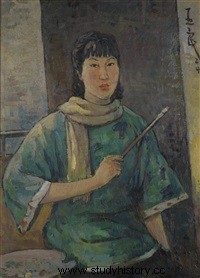
Her work, like that of her colleague Guan Zilan [English], who was one of the first artists to introduce Fauvism to China, received a mixed reception. The public watches them with fascination; the Chinese art world regards them as avant-garde artists embodying modernity. On the other hand, the government and the conservatives look very critically at his painting, and in particular his paintings of nudes.
Under the fire of criticism, Pān Yùliáng left China in 1937 and returned to settle in Paris where his art was more recognized. Frequenting circles of artists, she regularly exhibits in salons in France, but also in Belgium, Germany, England, the United States, Japan.
Four contemporary Chinese artists
In 1975, the director of the Cernuschi Museum offered him a personal exhibition. Pān Yùliáng accepts the exhibition but, instead of selecting only her own works, she invites three other female artists of Chinese origin to exhibit with her:Lam Oi, Ou Seu-Tan, Shing Wai. In 1977, Four contemporary Chinese artists is one of the first collective exhibitions to present only women.
Pān Yùliáng spent the rest of his life and career in France, exhibiting paintings, sculptures and engravings. The artistic community of Chinese origin in France elected her president of the Chinese art association.
Pān Yùliáng died in Paris in June 1977.
